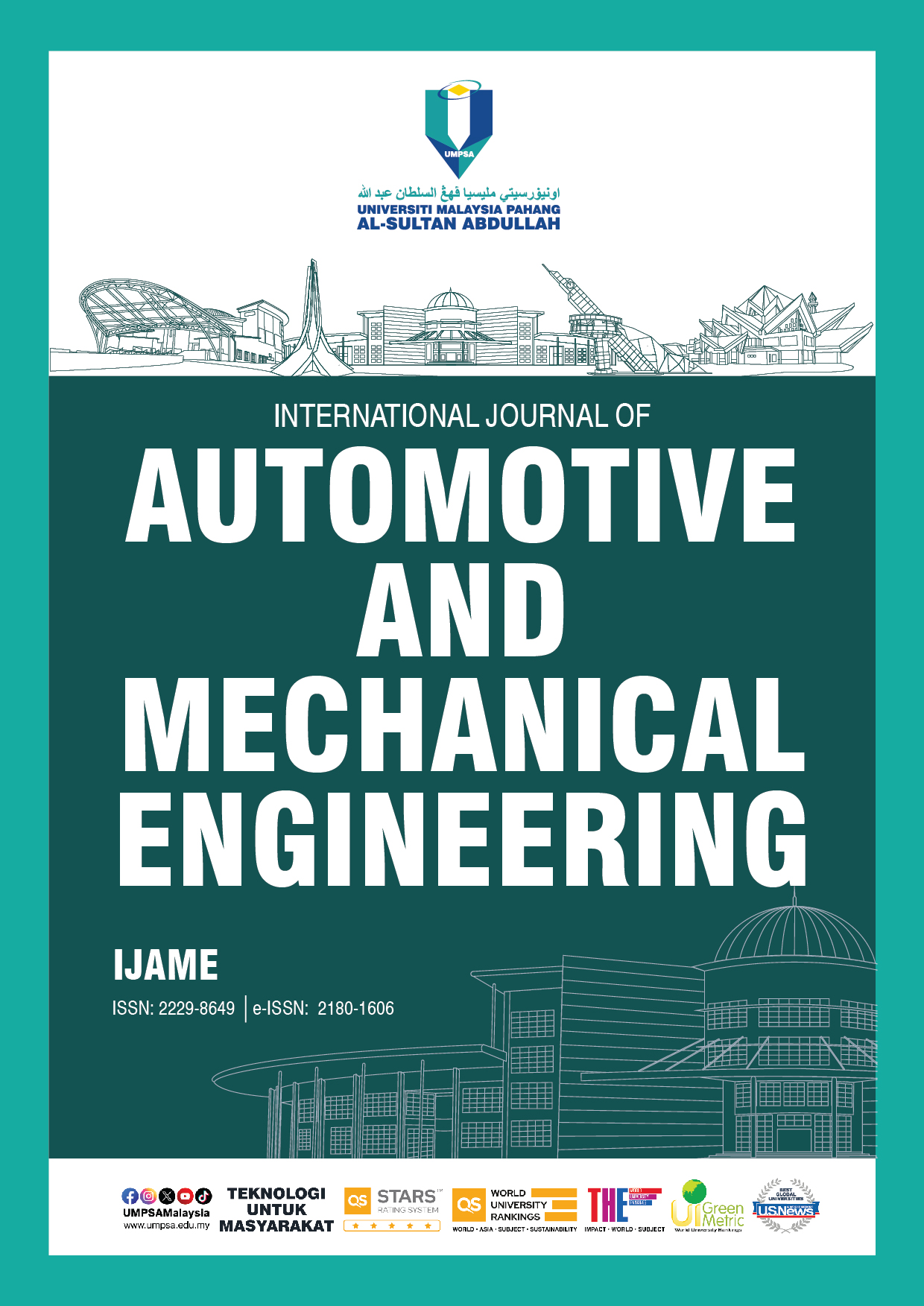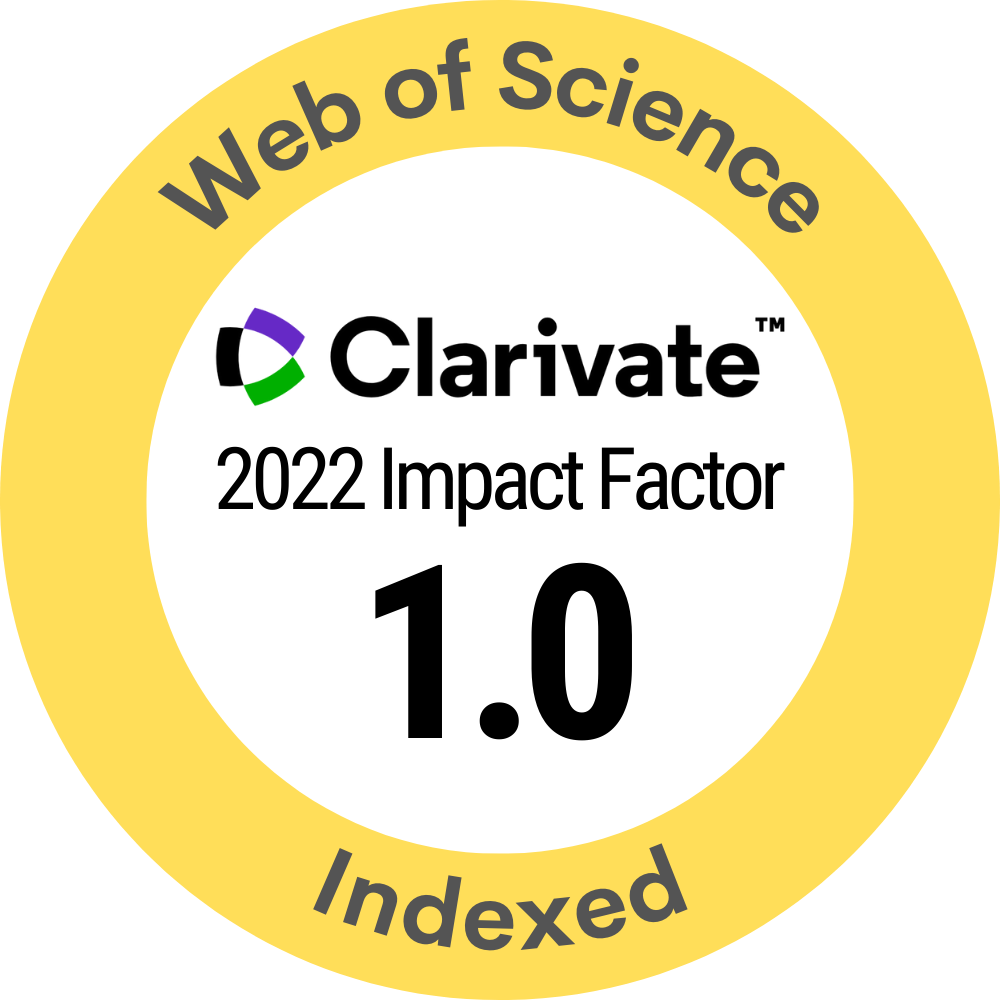Effect of LiDAR Mounting Parameters and Speed on HDL Graph SLAM-Based 3D Mapping for Autonomous Vehicles
DOI:
https://doi.org/10.15282/ijame.22.2.2025.14.0951Keywords:
HDL Graph Slam, LiDAR, Odometry, Environmental mapping, HD mapsAbstract
Generating high-accuracy 3D maps using Light Detection and Ranging (LiDAR) technology remains a critical challenge in autonomous vehicle (AV) development. While 3D mapping is foundational for reliable AV navigation, its accuracy is often compromised by poor LiDAR sensor calibration and external factors such as motion distortion. This study investigates the physical calibration of a LiDAR sensor mounted on a moving vehicle and its effect on 3D map generation using the HDL Graph SLAM algorithm. HDL Graph SLAM was selected as the offline post-processing method due to its self-correcting functions for estimating and auto-correcting positional errors from LiDAR data. Tests were conducted by varying the sensor tilt angle at -5°, 0°, +5°, and +10° and driving speeds at 20 km/h, 30 km/h, and 40 km/h. Results showed that a 0° angle at 30 km/h produced the most accurate 3D map, achieving a Root Mean Square Error (RMSE) of 0.0812 for straight paths and 0.1345 for curved paths. These findings demonstrate the significance of physical mounting parameters and speed on mapping performance. The study provides practical recommendations for LiDAR installation to enhance 3D mapping reliability under real-world road condition.
References
[1] J. Kim, B. J. Park, C. G. Roh, and Y. Kim, “Performance of mobile LiDAR in real road driving conditions,” Sensors, vol. 21, no. 22, p. 7461, 2021.
[2] C. B. Garigipati, “Evaluation of simultaneous localization and mapping (SLAM) algorithms,” M.Sc. thesis, Tampere Univ., Finland, 2021.
[3] M. Thiébaut, L. Furgerot, M. Deroo, L. Guillou, D. El Khamlichi, and M. Le Boulluec, “Experimental evaluation of the motion-induced effects for turbulent fluctuations measurement on floating LiDAR systems,” Remote Sensing, vol. 16, no. 8, p. 1337, 2024.
[4] L. Haas, E. Urbina, H. Masuda, M. A. de Oliveira, and S. Oh, “Velocity estimation from LiDAR sensors motion distortion effect,” Sensors, vol. 23, no. 23, p. 9426, 2023.
[5] B. Akpınar, “Performance of different SLAM algorithms for indoor and outdoor mapping applications,” Applied System Innovation, vol. 4, no. 4, p. 101, 2021.
[6] J. Jorge, T. Barros, C. Premebida, M. Aleksandrov, D. Goehring, and U. J. Nunes, “Impact of 3D LiDAR resolution in graph-based SLAM approaches: A comparative study,” in 2024 7th Iberian Robotics Conference (ROBOT), 2024, pp. 1–6.
[7] D. Hong, W. Zhao, Q. Shen, Z. Zhou, and C. Du, “A high-precision SLAM system based on LiDAR, IMU and wheel encoders,” in Proceedings of the 5th International Conference on Robotics, Intelligent Control and Artificial Intelligence (RICAI), 2023, pp. 905–910.
[8] A. Saha and B. C. Dhara, “3D LiDAR-based obstacle detection and tracking for autonomous navigation in dynamic environments,” International Journal of Intelligent Robotics and Applications, vol. 8, no. 1, pp. 39–60, 2024.
[9] L. Beltramone, V. De Lucia, A. Ermini, M. Innocenti, D. Silvestri, A. Rindinella, et al., “Applying SLAM-based LiDAR and UAS technologies to evaluate the rock slope stability of the Grotta Paglicci Paleolithic site (Italy),” GeoHazards, vol. 5, no. 2, pp. 457–484, 2024.
[6] J. R. V. Rivero, T. Gerbich, V. Teiluf, B. Buschardt, and J. Chen, “Weather classification using an automotive LiDAR sensor based on detections on asphalt and atmosphere,” Sensors, vol. 20, no. 15, p. 4306, 2020.
[7] C. Linnhoff, K. Hofrichter, L. Elster, P. Rosenberger, and H. Winner, “Measuring the influence of environmental conditions on automotive LiDAR sensors,” Sensors, vol. 22, no. 14, p. 5266, 2022.
[8] M. U. Khan, S. A. A. Zaidi, A. Ishtiaq, S. U. R. Bukhari, S. Samer, and A. Farman, “A comparative survey of LiDAR-SLAM and LiDAR-based sensor technologies,” in Proceedings of the 2021 Mohammad Ali Jinnah University International Conference on Computing (MAJICC), Karachi, Pakistan, 2021, pp. 1–8.
[9] S. Li, L. Wang, J. Li, B. Tian, L. Chen, and G. Li, “3D LiDAR/IMU calibration based on continuous-time trajectory estimation in structured environments,” IEEE Access, vol. 9, pp. 138803–138816, 2021.
[10] T. Wang, F. Lu, J. Qin, T. Huang, H. Kong, and P. Shen, “AscDAMs: Advanced SLAM-based channel detection and mapping system,” Natural Hazards and Earth System Sciences, vol. 24, no. 9, pp. 3075–3094, 2024.
[11] V. Kilic, D. Hegde, A. B. Cooper, V. M. Patel, M. Foster, et al., “LiDAR light scattering augmentation (LiSA): Physics-based simulation of adverse weather conditions for 3D object detection,” in Proceedings of the IEEE International Conference on Acoustics, Speech and Signal Processing (ICASSP), 2025, pp. 1–5.
[12] T. Okawara, K. Koide, S. Oishi, M. Yokozuka, A. Banno, K. Uno, et al., “Tightly-coupled LiDAR-IMU-wheel odometry with online calibration of a kinematic model for skid-steering robots,” IEEE Access, vol. 12, pp. 134728–134738, 2024.
[13] Q. Li and H. Zhu, “Performance evaluation of 2D LiDAR SLAM algorithms in simulated orchard environments,” Computers and Electronics in Agriculture, vol. 221, p. 108994, 2024.
[14] L. Hamad, M. A. Khan, H. Menouar, F. Filali, and A. Mohamed, “Haris: An advanced autonomous mobile robot for smart parking assistance,” in Proc. IEEE Int. Conf. Consumer Electronics (ICCE), 2024, pp. 1–6.
[15] L. Hamad, M. A. Khan, and A. Mohamed, “Object depth and size estimation using stereo-vision and integration with SLAM,” IEEE Sensors Letters, vol. 8, no. 4, pp. 1–4, 2024.
[16] M. A. Khan, H. Menouar, M. Abdallah, and A. Abu-Dayya, “LiDAR in connected and autonomous vehicles – perception, threat model, and defense,” IEEE Transactions on Intelligent Vehicles, pp. 1–14, 2024.
[17] E. Yong, M. A. Zakaria, M. H. Peeie, and M. I. Ishak, “3D LiDAR vehicle perception and classification using 3D machine learning algorithm,” in Intelligent Manufacturing and Mechatronics. iM3F 2023, Lecture Notes in Networks and Systems, vol. 850, Singapore: Springer, 2024, pp. 291–302.
[18] A. Vinayak, M. A. Zakaria, K. Baarath, et al., “A novel triangular-based estimation technique for Bezier curve control points generation on autonomous vehicle path planning at the roundabout intersection,” Journal of Intelligent & Robotic Systems, vol. 109, p. 89, 2023.
[19] K. Koide, J. Miura, and E. Menegatti, “A portable three-dimensional LiDAR-based system for long-term and wide-area people behavior measurement,” International Journal of Advanced Robotic Systems, vol. 16, no. 2, p. 9841532, 2019.
[20] K. Koide, J. Miura, M. Yokozuka, S. Oishi, and A. Banno, “Interactive 3D graph SLAM for map correction,” IEEE Robotics and Automation Letters, vol. 6, no. 1, pp. 40–47, 2021.
[21] Z. Bao, S. Hossain, H. Lang, and X. Lin, “A review of high-definition map creation methods for autonomous driving,” Engineering Applications of Artificial Intelligence, vol. 122, p. 106125, 2023.
[22] K. Koide, M. Yokozuka, S. Oishi, and A. Banno, “GLIM: 3D range-inertial localization and mapping with GPU-accelerated scan matching factors,” Robotics and Autonomous Systems, vol. 179, p. 104750, 2024.
[23] K. Koide, “glim: 3D range-inertial localization and mapping,” GitHub Repository, 2024. [Online]. Available: https://github.com/koide3/glim
[24] K. Koide, “GLIM: 3D range-inertial localization and mapping,” Koide3 Research Projects, 2024. [Online]. Available: https://koide3.github.io/glim/
[25] J. Jorge, T. Barros, C. Premebida, M. Aleksandrov, D. Goehring, and U. J. Nunes, “Impact of 3D LiDAR resolution in graph-based SLAM approaches: A comparative study,” in Proceedings of the 2024 7th Iberian Robotics Conference (ROBOT), Madrid, Spain, 2024, pp. 1–6.
Downloads
Published
Issue
Section
License
Copyright (c) 2025 The Author(s)

This work is licensed under a Creative Commons Attribution-NonCommercial 4.0 International License.







